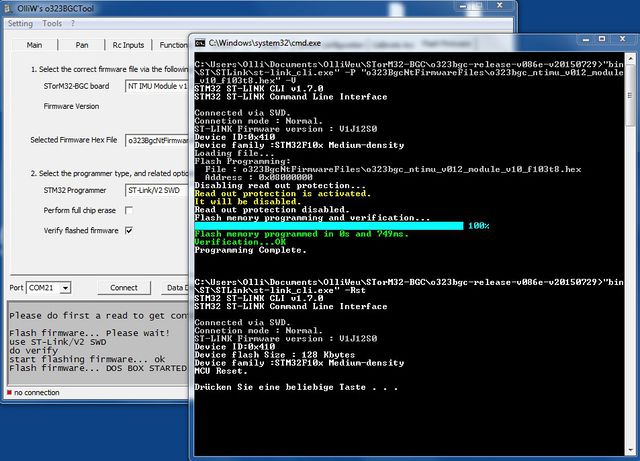Flashing the Mini CC3D Atom
On this board the BOOT0 pin is not exposed on a pad or solder joint, and even tied directly to GND, which makes any effort accessing it essentially impossible. The simplest method for first-time flashing is to use SWD via a ST-Link V2 adapter, which is supported by the GUI. Any subsequent flashing (updating) can be performed using a USB-TTL adapter, as described in Updating the Firmware of NT Modules.
First-Time Flashing Using SWD
1. You will need a ST-Link V2 Programmer or similar. Ensure that it is working (drivers installed, etc.).
2. Solder 3 wires to the "O", "K", and "-" pads on the Mini CC3D Atom and connect them to the programmer. There is a "+" solder pad very to close to the USB metal case, but it is recommend to power the board through the USB connector.
- "0" to "SWDIO"
- "K" to "SWCLK"
- "-" to "GND"
3. Connect the programmer via its USB plug to the computer. The Green LED will light and after booting for several seconds the Blue LED will flash on long and off short. Cycles ~ .75 seconds. This indicates the OP firmware is running. This matters since after the NT firmware loads the on and off times of the Blue LED will be equal.
4. In the STorM32 GUI select the Flash Firmware Tab and set the fields as shown below:
5. Hit the Flash Firmware button, which will open a DOS window similar to below:
The blue LED should now be flashing on and off with identical intervals, indicating the NT IMU firmware is running.
Updating Firmware
For updating the NT firmware you may again use the just described method of using SWD/ST-Link, but also the "canonical" procedure described in Updating the Firmware of NT Modules.




